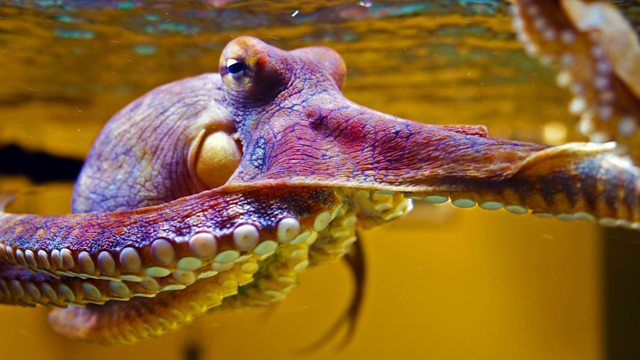
It starts with a glimmer, a nearly magical flicker across the skin of an octopus that disappears into the sand. That same pigment capable of changing colors, xanthommatin, has now been produced in unprecedented amounts by a team at UC San Diego, representing a significant stride towards sustainable, nature-inspired materials.
Published in *Nature Biotechnology*, the recent study outlines how researchers at the Scripps Institution of Oceanography have engineered bacteria to produce the rare pigment that bestows octopuses, squids, and cuttlefish their camouflage abilities in mass quantities. By tying the survival of the microbes to the production of the pigment, the team devised a feedback loop that transformed bacterial metabolism into a miniature biological factory.
## Converting Bacteria Into Creators
Historically, xanthommatin has been nearly impossible to synthesize in practical quantities. The pigment, which also lends vibrant colors to butterfly wings and dragonfly bodies, occurs in nature but has thwarted large-scale industrial production. Harvesting it from animals is not viable, and chemical methods are slow, costly, and produce low yields.
The UC San Diego team discovered an alternative solution. They genetically modified a bacterium so that its growth was contingent on producing the pigment. Each molecule of xanthommatin generated also produced formic acid, essential for the survival of the microbe. This straightforward yet clever linkage fostered a self-sustaining cycle.
> “We designed it so that activity through this pathway, involved in manufacturing the desired compound, is crucial for survival. If the organism fails to produce xanthommatin, it won’t grow,” stated Leah Bushin, the primary author of the study, now a faculty member at Stanford who conducted the research as a postdoctoral researcher at Scripps Oceanography.
To enhance the system further, the team utilized robotic automation and adaptive laboratory evolution to optimize the microbes, eventually increasing pigment production by up to 1,000 times compared to prior techniques. The bacteria produced one to three grams of pigment per liter, whereas earlier methods yielded only milligrams.
When the experiment finally succeeded, Bushin expressed her exhilaration at the discovery. She had allowed the cultures to incubate overnight and returned the following morning to find a deep color saturating the medium—a visual confirmation of success. “It was one of my best days in the lab,” she reminisced.
## From Concealment To Consumer Goods
Senior author Bradley Moore, a marine chemist holding simultaneous appointments at Scripps and the UC San Diego Skaggs School of Pharmacy, remarked that the breakthrough could pave the way for advancements in materials science and biomanufacturing. Potential applications include bio-based dyes, UV protectants, adaptive coatings, and even military or beauty products.
> “This natural pigment provides an octopus or a squid with its ability to blend in, a remarkable superpower, and our success in enhancing the production of this material is merely the beginning,” noted Moore.
The research, supported by the National Institutes of Health, the Office of Naval Research, the Swiss National Science Foundation, and the Novo Nordisk Foundation, also represents a broader shift towards sustainable chemistry. By linking microbial survival to molecule production, scientists can avoid fossil fuel-derived feedstocks and instead tap into nature’s own biochemical mechanisms.
According to co-author Adam Feist, whose lab focuses on computational bioengineering, this method signifies a glimpse into a new age of biomanufacturing, where computers, robots, and microbes work in tandem to generate complex molecules from simple sugars. This technique could be adapted for other valuable natural products, from pigments to pharmaceuticals.
For the moment, the hidden color code of the ocean has been unlocked within a Petri dish. What once sparkled solely beneath the waves may soon tint the materials that will shape our future.
[https://doi.org/10.1038/s41587-025-02674-3](https://doi.org/10.1038/s41587-025-02674-3)
**There’s no paywall here**
*If our reporting has informed or inspired you, please consider supporting us with a donation. Every contribution, regardless of its size, enables us to continue providing accurate, engaging, and reliable science and medical news. Independent journalism requires time, effort, and resources—your support ensures we can keep uncovering the stories that matter to you most.*
Join us in making knowledge accessible and impactful. Thank you for standing with us!